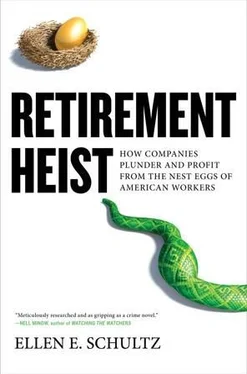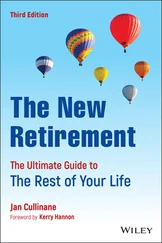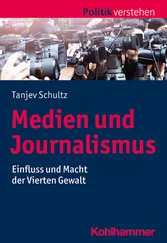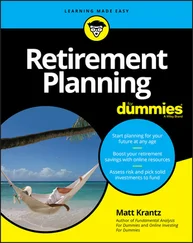And though companies are supposed to disclose details of the compensation of their top officers, they maintain that, because the executives’ benefits are now part of the broad-based plans, they are no longer considered to be executive benefits, so disclosure isn’t required.
These techniques were spawned in the early 1990s, when the IRS issued new rules intended to rein in an employer’s inclination to set up and run retirement plans for the favored few. To get tax breaks that allow them to deduct contributions and have the money grow tax-deferred, companies had to prove that their pensions, profit sharing, and 401(k)s don’t discriminate.
Employer groups hadn’t stood idly by awaiting these new regulations. As they had when FASB crafted new pension and retirement benefits accounting rules, employers and their consultants weighed in, demanding flexibility. They got their wish.
As a result, employers don’t have to actually treat everyone participating in the pension or savings plan the same. They are allowed to have a certain amount of “disparity,” or inequality, as long as they can pass certain tests showing that they weren’t going too far.
The first test is the so-called coverage test, which essentially determines that if 100 percent of the higher-paid executives are going to participate in a plan, then at least 70 percent of the lower-paid must also participate.
Thus, in a perverse way, this anti-discrimination rule makes it legal for employers to exclude 30 percent of their low-paid workers from a particular plan right off the bat.
Even before applying the coverage test, employers generally exclude many part-time workers, independent contractors, and “leased” employees, such as janitorial, security, and cafeteria workers. These categories make up about 25 percent of the U.S. workforce.
The diminished pool of employees “eligible” to participate don’t necessarily get their feet in the plan right away. They must first pass certain hurdles. These might require that they be twenty-one or older, work one thousand hours, or reach December 31 of the year following the year they were employed.
Excluding employees doesn’t just save money: It enables higher-paid employees to receive the maximum benefits. Under IRS rules, the amount higher-paid workers contribute to a 401(k) can’t be greater than a certain percentage of what the lower-paid contribute. But if the lower-paid contribute too little, the contribution gap will be too great, and the higher-paid won’t be allowed to contribute the maximum ($16,500 in 2011). The simplest way of closing the gap is to exclude as many lower-paid workers as possible. In the fast-food, retail, and hotel industries, it’s common for at least half the workforce to be locked out of the savings plans.
Inadvertently, this kind of legal salary discrimination can have a disproportionate impact on women and minorities. For years, Hugo Boss, which makes high-end clothing, excluded the 80 or so workers at its warehouse in Midway, Georgia, from the 401(k) retirement plan that it offered to the 232 employees and managers at its Cleveland headquarters. With their low salaries, the warehouse workers, mostly black women, would have contributed little to their accounts, causing the plan to fail another discrimination test, one that compares the contributions of the low paid and the highly paid. If the gap is too wide, the highly paid can’t contribute the maximum to their accounts ($16,500 in 2011). Ironically, the easiest way to prevent this outcome is to exclude low-paid workers altogether. [14] To help the plan pass the discrimination tests, the company added a minimum benefit of $400 to $500 a year for eligible retirees. “The Company’s pension plan passes the test by a wide enough margin to permit the transfer of most of the supplemental retirement benefits to the Pension Plan,” noted an internal company memo.
Countless studies and surveys lamenting the low participation rates of employees barely making a living wage have portrayed low-income workers as apathetic about saving money. Similar studies also trot out statistics about the low savings rates of blacks and Hispanics, and of women compared with men.
Lorenzo Walker, one of the warehouse workers at Hugo Boss, didn’t fit this stereotype. Walker, in his fifties, was earning only $6.50 an hour but still wanted to save some money for his retirement. He preferred an account like a 401(k), where his contributions would be withheld automatically from his paycheck, perhaps receive a matching contribution from his employer, and grow untaxed. His wife, a nail technician, had no retirement plan. Social Security was going to be the couple’s primary source of income, plus whatever Walker could squirrel away. He’d had a 401(k) at a prior job at a poultry-processing factory and had saved up about $11,000.
So one of the first things he asked when he started his job at Hugo Boss was whether the company had a retirement plan. The company said no. In fact, the company actually did have a 401(k) and the warehouse workers were shut out because their low incomes and savings rates would drag down the tax breaks of higher-income employees.
In 2006, the company agreed to let the employees’ union, Unite Here, set up a separate 401(k) for the warehouse and help run it. In exchange, the company would provide small matching contributions to their plans. The arrangement enabled the warehouse workers to have a 401(k) and receive company contributions, without affecting the Cleveland employees at all.
Many companies have these separate-but-unequal arrangements, with different 401(k)s for lower-paid and higher-income employees, who often get bigger company contributions. IRS rule 401(a)(5) says “a classification shall not be considered discriminatory merely because it is limited to salaries or clerical employees.” In plain English, a company can have a lousy plan covering clericals and a terrific plan for the professionals. “Cadillac plans versus ghetto plans” is what one lawyer called them. [15] Eli Gottesdiener, referring to the PricewaterhouseCooper’s plan in court documents.
There’s another benefit to excluding low-paid workers from the retirement plans, or segregating them to less generous plans: It makes it easier for plans that executives participate in to pass another required discrimination test, called the “benefits” test. To prove it is nondiscriminatory, the plan must pay the low-paid participants, as a group, at least 70 percent of what the higher-paid get.
This is where the real creativity comes in. The tests don’t require employers to compare the benefits of individuals; they can compare ratios of the benefits received by groups of highly paid with those of groups of lower-paid employees. Benefits consultants developed software that enabled them to gerrymander employees into hypothetical groups. One might have only highly compensated employees, or HCEs, to use the technical lingo. Another might have only lower-paid employees. Still another group might include only executives and low-paid seasonal workers hired during the holiday.
The goal is to reduce the gap—albeit artificially—between the high-paid and low-paid in each group. To make the benefits of the low-paid, as a group, appear bigger, companies like CenturyTel count Social Security as part of employees’ pensions. Employers might also contribute a small amount to the savings plans of low-paid workers—which makes their percentage of benefits look higher. This helps the plan pass the test, and doesn’t cost the company anything, because the temp workers won’t stick around long enough to vest and forfeit the employer’s contribution.
Читать дальше












